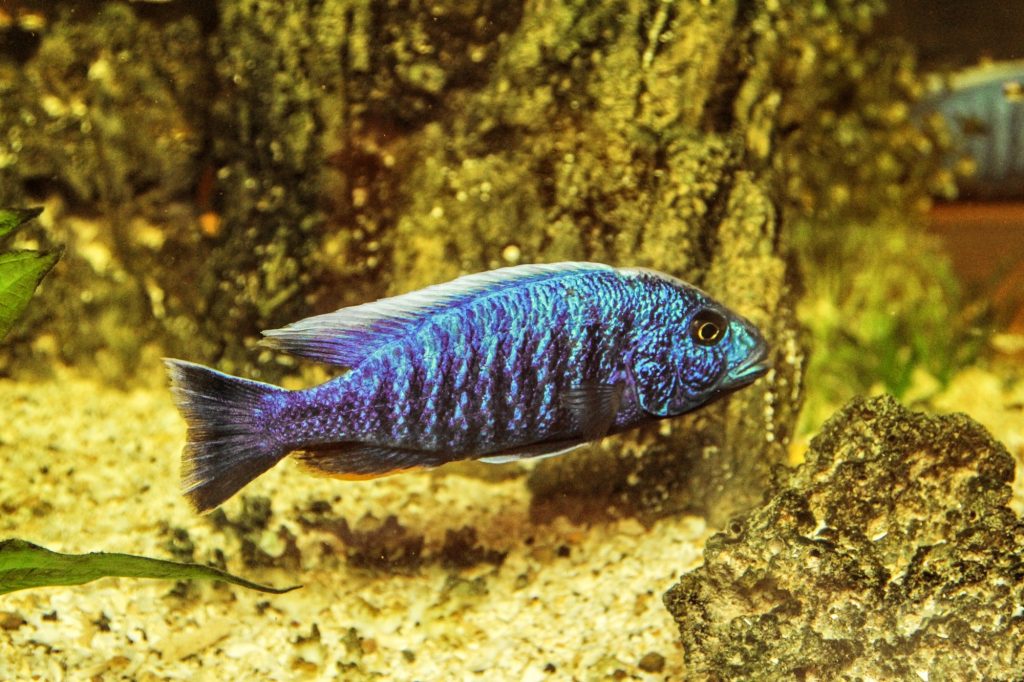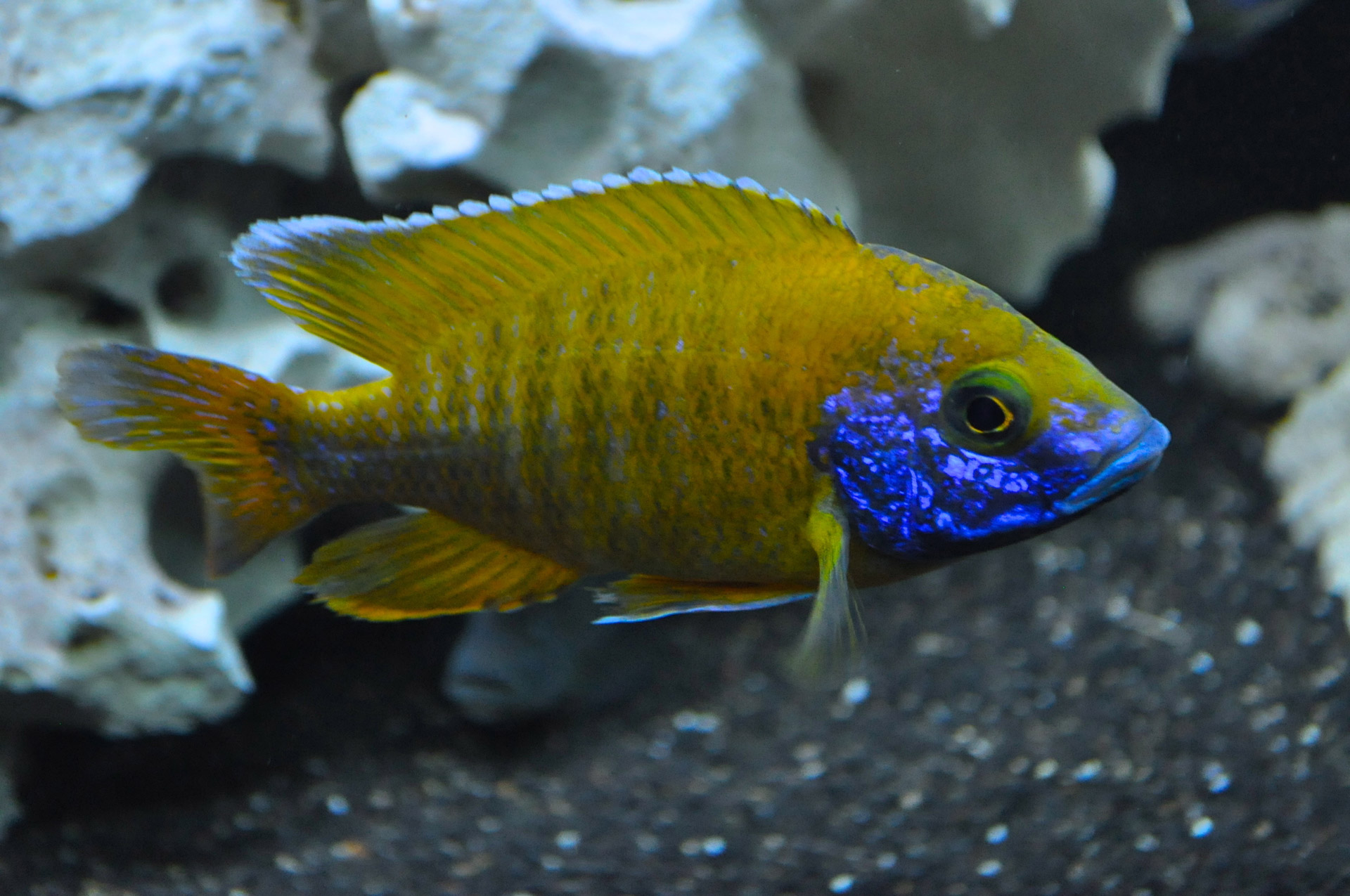Imagine a world underwater, where vibrant hues dance among rocky cliffs, and territorial squabbles erupt in a symphony of color. This is the enthralling domain of the peacock cichlids, captivating freshwater fish that have stolen the hearts of countless aquarium hobbyists. But beneath the dazzling display lies a complex web of needs and behaviors waiting to be unraveled. At Home Aquarium Supplies, we believe knowledge is the key to unlocking a thriving aquatic paradise, and today, we embark on a journey to demystify the peacock cichlid.
A Genus of Gems:
What are peacock cichlids? Belonging to the genus Aulonocara, peacock cichlids hail from the majestic Lake Malawi in East Africa. Comprised of over 22 distinct species, each boasts its own unique color palette. With the right lighting, the males, true to their namesake, strut their stuff in stunning displays of blue, red, yellow, and orange. Females, though less flashy, hold their own with subtle elegance. But don’t be fooled by their beauty – these fish pack a punch when it comes to personality.
Sparkling Personalities with Teeth:
Peacock cichlids are generally considered semi-aggressive, establishing territories and defending them with fin nips and chases. While not as boisterous as some of their cichlid cousins, their social dynamics are no less fascinating. Keeping a harem of females per male helps distribute aggression, creating a more peaceful community. However, their territorial nature necessitates careful tankmate selection. Peaceful mbuna or other peacock cichlid species often make good companions.

Crafting a Jewel-Box Home:
To truly unlock the vibrancy of your peacock cichlids, replicating their natural habitat is key. A minimum 55-gallon tank provides ample space for a small group, with larger tanks recommended for multiple groups or bigger varieties. Hard, alkaline water with a pH of 7.5-8.5 and temperatures ranging from 78-84°F are essential for their well-being. Rocks and caves offer security, but open swimming space is crucial for these active fish.
Fueling the Flame:
Peacock cichlids are omnivores, enjoying a varied diet of high-quality flakes, pellets, and frozen treats like brine shrimp and bloodworms. Maintaining a balanced diet not only nourishes their bodies but also enhances their magnificent colors.
Expert Insights:
Delving into the world of peacock cichlids reveals a universe of fascinating details. Their breeding habits, mouthbrooding behaviors, and susceptibility to specific health concerns require further exploration. Home Aquarium Supplies is your trusted resource, offering a wealth of information and expert advice to guide you on this captivating journey.
Ready to Dive In?
The vibrant world of peacock cichlids awaits. With proper care and understanding, these dazzling jewels can transform your aquarium into a living masterpiece. So, are you ready to unlock their secrets and witness their captivating underwater ballet? Here are some common questions and answers to help you get started.
Peacock Cichlid Q&A:
Q. How many peacock cichlids can I keep together?
A. The ideal number depends on tank size and species. Start with a small group and observe their interactions before adding more.
Q. What are some good tank mates for peacock cichlids?
A. Peaceful mbuna, other peacock cichlids, or other Lake Malawi fish with similar temperaments are good options. Avoid overly aggressive species
Q. Do peacock cichlids need a lot of hiding places?
A. While rocks and caves offer security, especially for females, open swimming space is crucial for these active fish.
Q. Do peacock cichlids need a lot of plants?
A. While plants can provide additional hiding spaces, they are not essential. Focus on rocks and caves for territorial needs.
Q. Do peacock cichlids need strong filtration?
A. Yes, a powerful filter is essential to maintain water quality in their hard, alkaline environment.
Q. How often should I clean my peacock cichlid tank?
A. Weekly water changes of 20-30% are recommended.
Q. What are some signs of stress in peacock cichlids?
A. Hiding excessively, clamped fins, loss of color, and erratic swimming can indicate stress. Adjust tank conditions or tank mates if needed.
Q. How can I encourage breeding in my peacock cichlids?
A. Provide ample hiding places for females, maintain good water quality, and offer a varied diet.
Q. What are some common health concerns for peacock cichlids?
A. Bloat, Malawi bloat, and fin rot are potential issues. Maintain good water quality, provide a balanced diet, and monitor your fish closely for signs of illness.
Remember, proper research and understanding are key to creating a thriving environment for your peacock cichlids. With dedication and the right resources, you can witness the magic of these dazzling jewels unfold in your own aquatic haven.
